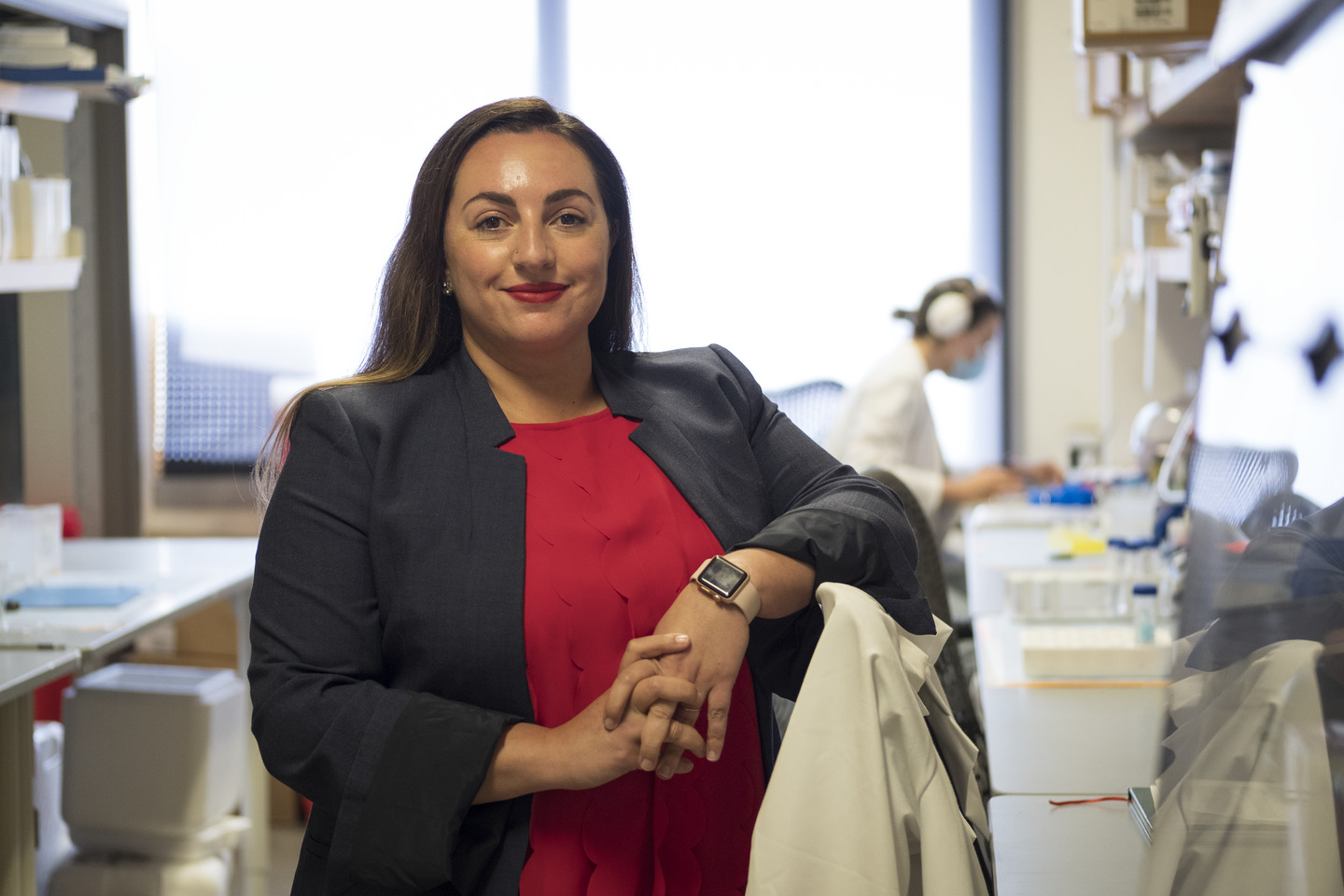Associate Professor Evangelia Bellas of the Bioengineering department recently received combined funding with the Center for Advancement of Science in Space, referred to as CASIS, and the National Science Foundation for their project: Adipose Tissue Mechanosensing in True Microgravity.
Mechanosensing is the ability of a cell to register and react to a mechanical force. For example, cells experience a mechanical load from the standard level of earth’s gravity and react accordingly.
Microgravity refers to any gravity level that is close to zero gravity, the level of gravity that astronauts encounter on the moon and in space. When cells are exposed to microgravity, they lose the mechanical force gravity exerts on them and become mechanically unloaded.
Dr. Bellas likes to explain the concept of mechanical loading versus unloading to how humans recover from some injuries, sharing, "mechanical unloading on Earth, for example, is if you are under bed rest, say for a broken limb...they have that limb elevated, that limb would be considered mechanically unloaded to a certain extent. Mechanical unloading is helping to offset a load.”
Much of the existing microgravity research on the human body centers on the musculoskeletal tissues, such as bones, muscles, joints, etc. However, Dr. Bellas noticed something missing from microgravity studies: the study of adipose, or fat, tissue.
The idea for a study first came to her in 2018. Through existing research, it was already understood that astronauts lose weight via bone density and muscle mass. Since adipose tissue controls metabolism, which feeds musculoskeletal tissues, it only seemed logical to Bellas to study how microgravity affects adipose tissue.
“Fat is what is essentially powering these musculoskeletal tissues, so why aren’t we thinking about what fat is doing that may or may not be supporting these other tissues?...Here’s an opportunity to understand what is happening to our metabolism in these cases and how might that then affect astronaut health or even the health of people on earth experiencing mechanical unloading,” Bellas explains.
Dr. Bellas and her team, with funding from NASA, used a bioreactor, to maintain a simulated, controlled microgravity environment for fat constructs. In the microgravity environment, the fat constructs went through a tissue remodeling process, where tissues reorganize and restore themselves. The results revealed that, when exposed to microgravity, the fat tissue was remodeling more metabolically active, or “healthier.”
While the results of the research were exciting, Dr. Bellas knew more testing was needed to determine why the adipose tissue was being remodeled in that way and what exactly was causing it.
Now, six years from the initiation of their NASA-funded project, Dr. Bellas and her team will get a chance to have their research project conducted in space by astronauts aboard the International Space Station.
By testing the fat constructs in space, Bellas and her team will now be able to determine if the remodeling was truly caused by microgravity, as well as review the effects of other aspects of space on the fat constructs, such as space radiation.
The grant from CASIS and NSF begins in 2025 and will take place over a period of three years.
The first year will be validation testing and creating a plan for the launch. Bellas and her team need to ensure that the fat constructs from their lab can survive being shipped to the launch location and develop back-up plans if the launch is delayed or if any fat constructs are damaged in travel.
Once approved for launch, the fat constructs will stay on the ISS for six months as the astronauts aboard feed the fat constructs and keep the experiment running. The team is planning for a launch in early 2027.
The hope is for results that can provide new mechanosensitive targets for metabolic diseases such as obesity and type two diabetes. If they can determine what part of the fat cell skeleton is affected by microgravity that causes the fat cell to remodel to a more metabolically active cell, that can provide a target for further drug development research.
“Providing new opportunities for new targets and new ways of thinking about how to treat fat I think is important because you can’t just focus on the diet,” shares Dr. Bellas.
In addition to preparing for all scenarios in the launch, Dr. Bellas and her team plan to include fat cells from diverse populations including both male and female cells. Diversity in the cells represented is crucial to understanding how microgravity can affect the adipose tissue of all individuals.
The BellasFATLab is gearing up to begin preparation for the project early this year, with all members of the lab from undergraduate to graduate students playing an important role as the team prepares for launch.

